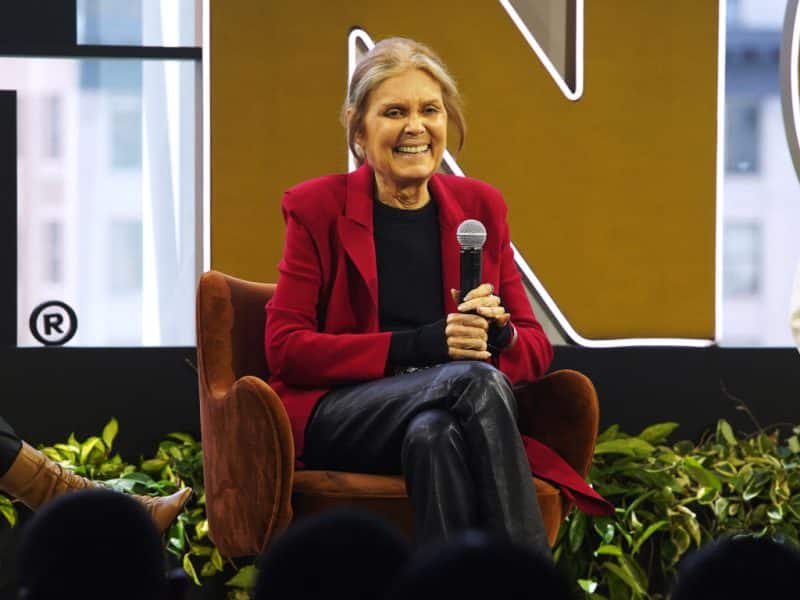
(WOMENSENEWS)–At 10 a.m. on a recent chilly morning, more than 150 workers stood along the side of the road in Fairfax County, an affluent suburb of Washington, D.C. They were huddled against the wind, peering into the windows of passing cars, hoping for work. Motorists sped by quickly, looking away, to avoid attracting attention and raising false hopes.
Unemployed laborers are a frightening sight to those who are still working.
On Friday, the ranks of the still-employed were found to be thinner than ever when the Department of Labor reported that unemployment had skyrocketed in April to 8.9 percent, the highest rate in 25 years, up from 8.5 percent the previous month. About 13.7 million people in the United States are jobless.
It is in alarming times like these that some of the key programs of the New Deal demonstrate their continuing significance and highlight how much Americans continue to rely on solutions fashioned then in response to lessons learned, in times that seem eerily similar to our own.
It is also in alarming times like these that the system’s inadequacies are laid bare.
For U.S. workers, the economic shock absorber system is unemployment insurance. It is the Federal Emergency Management Agency of economic hurricanes, and it is keeping more than 6 million individual workers afloat during these bad times
Canny Social Worker
The unemployment insurance system was propelled into existence by Frances Perkins, the canny but little-known social worker who was President Franklin D. Roosevelt’s secretary of labor.

She had studied the U.S. economy for 20 years before she took up her Cabinet post and she was FDR’s industrial commissioner from 1928 to 1932 while he was governor of New York. Together they watched the Great Depression arrive and cast its shadow across the U.S. landscape.
Perkins is most famous today for her role as primary architect of Social Security.
But in 1933 and 1934, the program she championed most fiercely of all was unemployment insurance. Now it has become a first line of defense against capitalism’s ruthless pattern of boom and bust cycles.
Perkin’s role in establishing a safety net for unemployed workers is largely forgotten. It’s time to change that.
Millions of people today will pay their bills and eat their dinner because of her handiwork. Regardless of political ideology, they have reason to offer her their thanks.
Damping Boom-Bust Cycles
Perkins and FDR had lived through at least three similar boom and bust cycles: in 1893, in 1907 and in the early 1920s. They wanted to blunt the worst of the hardship average people suffered when the downturns hit.
Unemployment insurance is a program designed to help workers who lose their jobs through no fault of their own, so they can keep their families fed while they look for new jobs. It is a short-term program, because Perkins and FDR had complete faith in capitalism’s ultimate recovery.
It was part of the package of social safety proposals, including Social Security, engineered by Perkins and FDR and enacted in 1935. Perkins brought her drive and commitment to the effort and FDR won the political support that allowed the package to be piloted to passage.
At the time, unemployment insurance was attacked as a socialist scheme. In some right-wing circles, it continues to be excoriated. But people of every political stripe are usually more than happy to line up for their checks when they find themselves out of work.
Failings to Still Fix
The state-federal unemployment program Perkins and Roosevelt devised is far from perfect though.
Perkins was disappointed in its failings at the end of her life. Some states are generous to their jobless workers; other states give them only a pittance.
The biggest payment a worker in Tennessee can get is $275 a week, but a worker doing the same kind of job in Kentucky can get $415 weekly, according to a recent Labor Department study. Arizona’s maximum benefit is $240 weekly, but in neighboring New Mexico, the highest benefit is $455 a week.
In addition, hordes of workers are unfairly excluded from the system by rules that pretend they don’t exist. Many undocumented immigrants, like some of those day laborers standing along the road in Fairfax County, aren’t covered because their employers never paid payroll taxes on their behalf. People mislabeled "independent contractors"–even though they labor side-by-side with payroll employees–are out of luck as well.
The Labor Department’s reports highlight the discrepancy.
On top of the 13.7 million workers counted as jobless in April, an additional 2.1 million have become so discouraged in their job hunts that they have stopped looking. That adds up to 15.8 million jobless.
But the unemployment insurance system is providing benefits to only 6.4 million.
Recent news reports, meanwhile, have highlighted crashing computer systems, malfunctioning voicemail trees and bureaucratic snafus in many states that are preventing people from getting benefits in a timely manner.
Frances Perkins would be outraged by reports of workers waiting weeks or months for their checks, by phones ringing unanswered and stories of desperate workers dangling in Internet hell as they try to file claims electronically. Reform is needed. If Perkins were alive today, heads would roll.
Kirstin Downey, a former economics reporter at the Washington Post, is the author of "The Woman Behind The New Deal: The Life of Frances Perkins, FDR’s Secretary of Labor and His Moral Conscience." For more information, visit www.kirstindowney.com.


